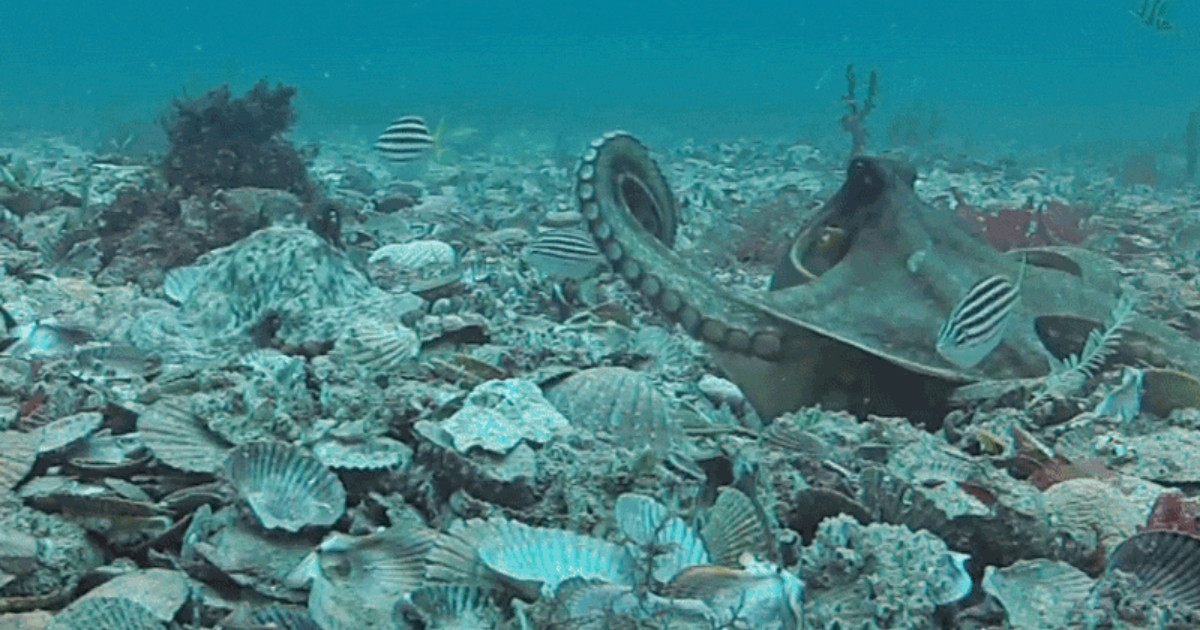There was already a video showing how common Sydney octopuses behave (octopus tetricus) They threw shells, algae, and mud at each other, but at the time it wasn’t entirely clear whether the animals did it on purpose or if they bumped into each other accidentally. The Alaskan researchers now say the intent is clear: The octopus’s funnel must be in a specific and unusual position to prevent it from accidentally targeting the other animal.
Octopuses are usually solitary creatures, but Sydney’s common octopuses are so densely populated in the Jervis Bay area that they can display behavior you don’t really see from animals living in solidarity. That’s exactly why researchers in Alaska wanted to immediately monitor the octopus population, lowered the camera between them, and after analyzing nearly 20 hours of footage, found that there were cases when the animals picked up shells, mud, debris or algae with their arms, threw them away, and then From its funnel it is pushed in a predetermined direction by the water shot. Sometimes this trend seemed random, but there was also plenty of evidence that octopuses were shooting at each other.

Godfrey Smith and others / PLOS ONE
Throws directed at each other were stronger than when the octopuses “threw the litter” out of their territory, and they occur more often when the animal making the throwing had a dark, uniform color. Throwing was usually done toward another animal with a certain arm, and the material thrown was more often clay than anything else. The thrown octopus tried to avoid the attack.
“We were unable to assess the cause of ejaculation,” said David Shell, a researcher at Alaska Pacific University. According to him, throwing can “help animals cope with the fact that there are many octopuses living in their area.” In other words, behavior is more likely to have social functions.
This work opens a new door for research into the social lives of famously intelligent animals, says Tamar Gutnik, an octopus neurobiologist at the University of Naples Federico II in Italy.






